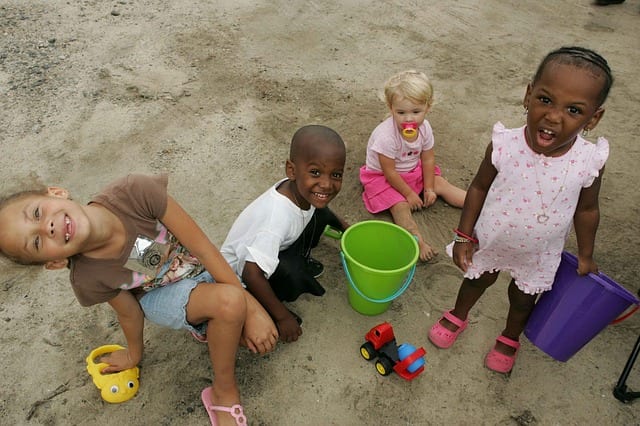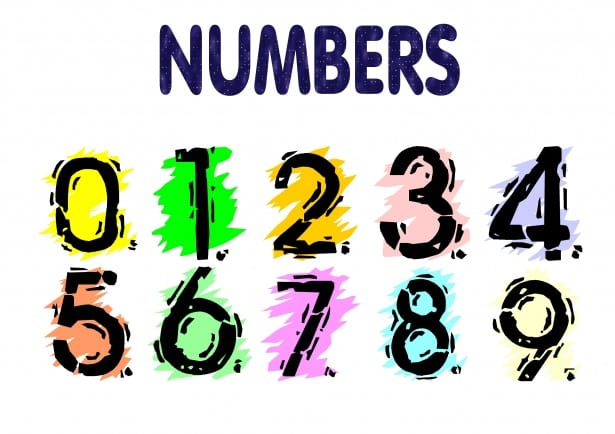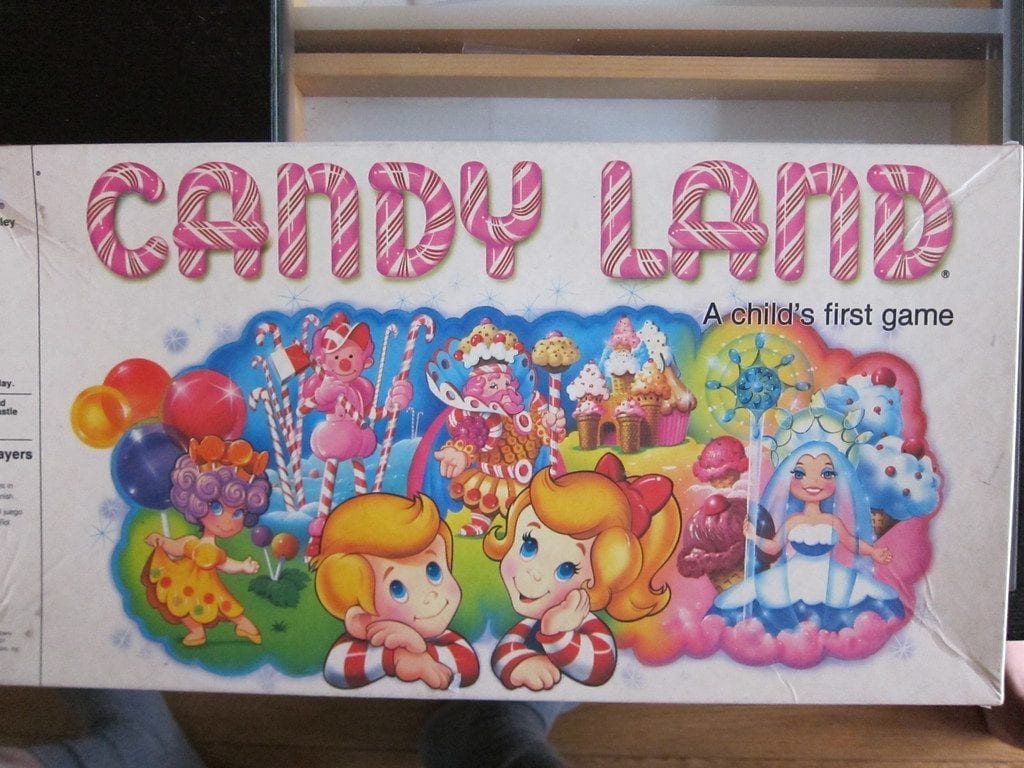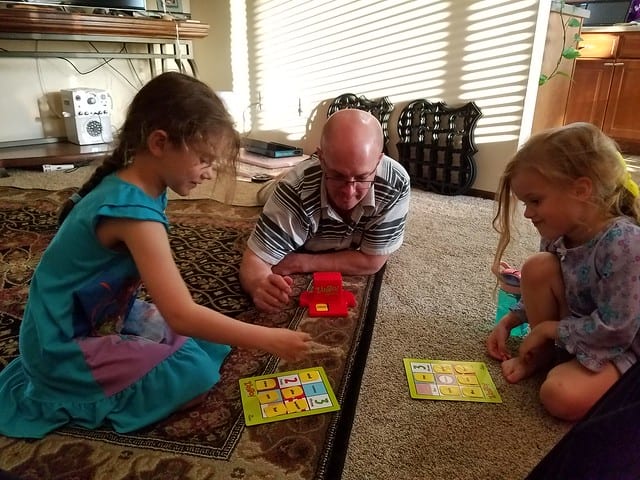Looking for games for 4 year olds? Being a kid is fun. Here are some fun games for young kids that you can do at home.

They have lots to learn! Four-year-olds should be able to say his or her name and age. They should be able to speak 250 to 500 words. Four-year-olds should be able to answer simple questions and should be able to speak at least five words sentences. A child at this age should also be able to tell stories! Learning a game is fun for kids. Having so much to learn, what fun game should four-year-olds be playing? Puzzles, board games for child, etc? At what age should kids start playing a game? What are the top game that most kids love to play for all kids’ ages? In particular, what are the best toys for four-year-old boys and girls who are eager to explore and learn through play?
Games For 4 Years Old
Free activities like number game can help kid’s listening skills and mental development. Children learn with parents or with their siblings. At two years old, your child may learn to count up to ten so you have to introduce him to a different game that will help him practice counting at an early age. However, your child will still not understand the concept of numbers or quantities. We start a 2 because a year old’s attention span is still short and wouldn’t be able to take the information you are going to teach. At four years old, you can help your child learn to identify numbers or what these numbers represent. Young minds still need some guidance which is why you may do this game and teach them personally, just treat it as family time.
- Give them some time to learn new activties, especially when they’re bored.
- Play with them. They love parents to be involved. Parents who are involved with kids also have a stronger bond with their offsprings.

There are a lot of games for 3 year olds can play to help him or her identify numbers. One example is the “Shark Bite” game. This classic game includes a hungry shark, 12 colorful sea creatures, two fishing rods, one sticker sheet, and one die. Its goal is to get or “own” as many sea creatures as possible before the shark bites. You and your 4 year olds or a friend will take turns rolling the die. Let your child identify the number of sea creatures on the dice. Once he or she does so, the player should use the fishing rod to catch a sea creature from inside the shark. You never know which sea creature will trigger the shark to bite. So, the more you gather before the shark bites, the better! After all learning game can be fun.
Learning Sequencing
In preschool and kindergarten, your four-year-old will learn the numbers 1 to 10 in sequence! They will also learn about primary colors such as red and green! For your 4 years old, try this one, “Red Light Green Light 1-2-3” It is a simple game for your 4-year-old. Each player gets seven cards. The first player to use up all of the cards win. This one will help you to teach your 4 year olds how to follow a sequence. The fun game will allow him or her to recognize the colors red and green. As for numbers, of course, the numbers one, two, and three.
The wonderful thing about this activity is its simplicity. No batteries are needed. The rules are not complicated. All you need to play the game are the cards and you can already create a fun game. You can also buy board games for kid’s equencing skills and cognitive skills. Either way, you are helping your kid develop his basic math skills as well as his critical thinking skills. Board games are also a fun way to help them acquire great memory skills, hand-eye coordination, motor skills.
Games For Kids
So, why don’t you teach colors to your kids? Let them draw and color their drawings.
Color recognition is one of the things that most 4 year olds age four learn in school. The games for 4-year-olds to play must be interactive. There are a lot of activities that you can play with your 4 year olds that will help him learn color recognition (and perhaps shape recognition as well) – such as a fun memory game that will allow him or her to learn colors and shapes. Practicing color and shape recognition can also aid in shaping the child’s brain. Have a quick game of ‘Name the color’ every day – you’ll see the difference soon.
A perfect game to play is “Candyland.” The sight of candy will surely bring a little one running. The good thing about this candy is that it will not cause toothache. It will not ruin your child’s appetite, as well. The game also comes with a game board, label sheet, spinner, and instructions. You will also find Mally Mallo, Twirly Girl, Cutie Cone, and Giggly Gumdrop. The goal is to reach the end of the activity, being King Kandy’s Castle. You can play this for an extended period and your child won’t even notice – he won’t get bored.
Teaching kids about colors is an essential part of early education, and incorporating different shapes can make the learning process more engaging. To make teaching colors enjoyable and break free from conventional methods, parents and educators can point out various hues in everyday objects, fostering a dynamic and interactive approach to color exploration for children.

Another easy one to play with your child is “Connect4.” This one only consists of two colors. Red and yellow. The Connect4 game includes a game grid, 21 red discs, and 21 gold or yellow discs. Your child’s goal will be to put four discs of the same color in a row. Whether it be in a diagonal, vertical, or horizontal row. While trying to put two discs of the same color in a row, you will also need to stop your opponent from being able to put discs in a row. So, let the games for kids begin! What a way to improve your child’s critical thinking skills!
Playing Games & Learning Your Sight Words
Do you remember your sight words? Some examples are in, on, the, my, come, in, for, me, they, and the numbers one to ten. One activity to play with your child is “Zingo!”
“Zingo” is one of the simple indoor games for kids. Yes, from its namesake, Bingo. The goal of the activity is Bingo! You can either fill up the whole game card, make a square, and do the other goals of a regular Bingo. You can play this play with your child’s friends and other adults as well since it can be played for two players or more.

However, the best part about this is not about achieving a Bingo. It is learning sight words. Instead of a number, your child will see sight words from the dispenser. When the dispenser dispenses a sight word that can be found on your game card, you shout the word. If you are the first to shout the word, the card is yours to put on your game card. The first one to complete Bingo or Zingo wins. This is a cooperative game that your child will truly enjoy.
There are a lot of games for kids you can play with your four-year-old. Most of these games for kids are not just for fun but will help you help your child learn. As a four years old child, your child is great at absorbing new learning, and doing so in a fun way is so much better. A basic board game would be fun that can keep your kids interested.
FAQs On Games For 4 Year Olds
Great Games For 3 year olds
Top Indoor and Outdoor Games for 2 year olds
Great Outdoor Games for 1 year olds
What Are The Benefits Of Outdoor Play That Helps Children’s Development?
How Can Parents Encourage Imaginative Play In Their Children?
What Safety Precautions Should Be Taken When Kids Are Playing Outdoors?
What Role Does Unstructured Playtime Have In A Child’s Learning And Social Skills?
How Can Technology Be Balanced With Traditional Play Activities That Kids Love?
What Are Some Creative Indoor Game Ideas That Babies Can Play Rainy Or Cold Days?
How Does Playing With Peers Contribute To A Child’s Emotional And Social Development?
What Are Some Strategies That Can Foster Cooperative Play Among Children Of Different Ages Or Abilities?
How Does Play Contribute To A Child’s Cognitive Development And Problem-Solving Skills?
What Are Some Age-Appropriate Game And Activities That Promote Sensory Exploration In Young Children?
How Can Parents Encourage Physical Activity And Gross Motor Skill Development Through Play?
What Are The Psychological Benefits Of Imaginative Play In Children’s Emotional Well-Being?
How Can Parents And Caregivers Facilitate Constructive Play?
Last Updated on May 11, 2023 by Mary Cimeni
DISCLAIMER (IMPORTANT): This information (including all text, images, audio, or other formats on FamilyHype.com) is not intended to be a substitute for informed professional advice, diagnosis, endorsement or treatment. You should not take any action or avoid taking action without consulting a qualified professional. Always seek the advice of your physician or other qualified health provider with any questions about medical conditions. Do not disregard professional medical advice or delay seeking advice or treatment because of something you have read here a FamilyHype.com.